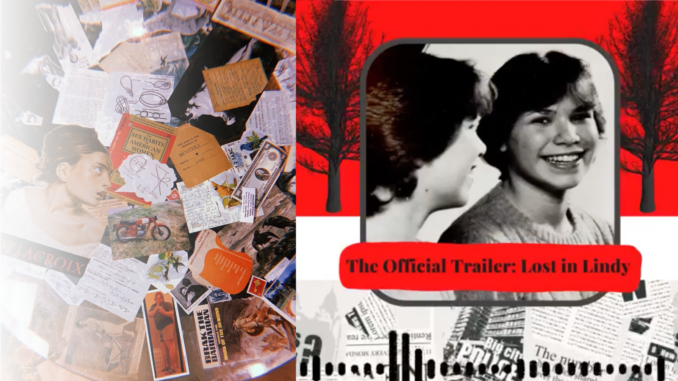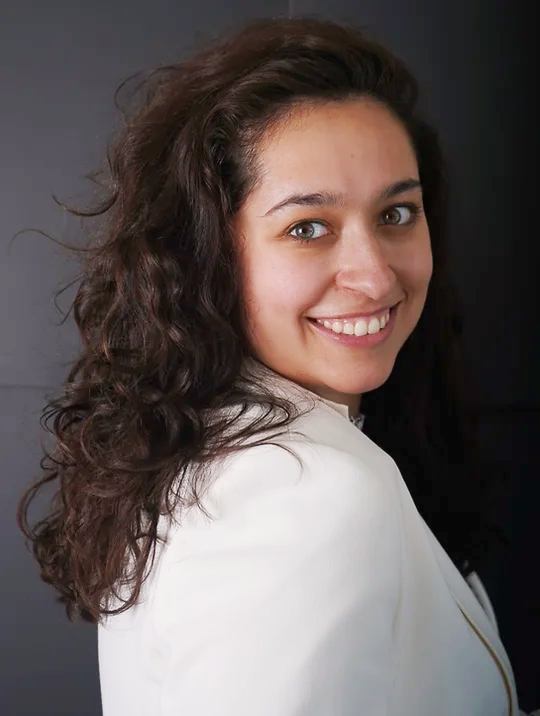
WESTWOOD—After more than six months investigating the tragic case of Laura Ann Parker — the teen went missing in 1984 and was found dead of questionable “natural causes” (and in unusual circumstances) — a journalist who graduated Westwood Regional High School and lives in the borough says her related true-crime podcast is set to drop.
Alex Palacios has released a trailer to her series, “Lost in Lindy,” which she tells Pascack Press should “reignite the conversation” around Laura’s disappearance, death, and the aftermath.
Says Palacios, “Laura Parker was like any other 14-year-old girl in 1984, until she went missing in Lindenhurst, Long Island. After a week of searching, the Suffolk County Police Department labeled her a runaway — but that was far from the truth. Not only were they wrong, but Laura was much nearer than anyone could have ever imagined.”

She says, “Found just three blocks away from Lindenhurst High School, covered in carpet, at the bottom of a ditch, lay the body of Laura Parker. According to police, Laura died of natural causes… an unbelievable result. Almost 40 years later, the disappearance and murder of Laura Parker is still unsolved and shrouded in mystery.”
Among the questions: Was Laura kidnapped? Did she know her killer?
Uncovered, a resource on cold cases, says Laura was a freshman softball player and member of the school’s chorus, and had talked about becoming a singer. On May 25, 1984, Laura missed softball practice and didn’t return home.
The next day, her parents contacted the Suffolk County Police Department to report her missing.
Uncovered says, “Her parents grieve over the careless manner she was left to be found. They buried her ashes at their church, St. Boniface Episcopal, [w]here they gathered years after her murder to mourn with other families who also experienced the tragedy of having their children murdered.”
It added that in 1989, the New York Times reported that two homicide detectives who also reside in Suffolk County sent a letter to 1,000 of Laura’s former classmates to ask for leads. “The letter is trying to get some sympathy,” lead detective Carmody said. “We never give up on looking for new information.”
Telling her story
Palacios says “This story is personal to me because my mom, Barbara, grew up in Lindenhurst, N.Y. and went to school with Laura. They were freshmen when Laura disappeared. My mother always remembered what happened to her. When she first told me this story, I was left with many questions and knew I had to dig deeper.”
She adds, “It’s time to reignite the conversation” and invites listeners to join her on her “journey to discover the truth” in “Lost in Lindy” (found wherever you get your podcasts).
Palacios is an independent journalist from Westwood. She graduated Westwood Regional High School in 2018 and from Penn State University as a broadcast journalism and political science double major, women’s studies minor, in May 2022.
She’s spent most of her life in Westwood, where her mom lives. At Westwood Regional Jr./Sr. High School, Palacios represented as a national youth correspondent to the 2017 Washington Journalism & Media Conference. She also was editor in chief of Cardinal Chronicle, the high school’s student news site.
Since graduating Penn State — she earned spots on the dean’s list at Donald P. Bellisario College of Communications in fall 2019 and spring 2020 — she’s had coveted media internships and works as a freelance production assistant at MSNBC and NBC News in New York City.
Her probe of the cold case, inaugurated amid a podcast production class, is mentored by Penn State University professor Katie O’Toole, Pulitzer Prize-winning journalist Rick Tulsky, and criminologist Tamson Six.
Tulsky was a founder of Injustice Watch and served as editorial director until he retired in 2020. Most recently he was the founding director of Medill Watchdog, a program at Northwestern University’s journalism school to undertake collaborative projects on systemic problems while mentoring students in such work.
Palacios’ first original podcast is “The Biracial Beat” (2022), which she says is on hold.
Palacios and her mom are rapt fans of the “Crime Junkie” podcast, NBC’s “Dateline,” ABC News’ “20/20,” and “Unsolved Mysteries” on Netflix. They listen to stories in the genre on car trips. “We throw it on and see if we can solve it.”
Palacios says she’s come “closer and closer” to solving the Parker case, though given its richness she’s particularly drawn to its effects on the community.
She says, “I have spent over six months investigating this story, working with Laura’s family and interviewing people across Long Island” in her journey “to make sense of this tragedy.”
She says she interviewed the daughter of a man who died in 2005 whom she calls the case’s prime suspect — there are several suspects — as well as the lead homicide detective on the case.
She’d call the project a success if she could bring closure to those for whom this story lingers as questions and frustration.
She says she has information the Parker family was never made aware of. Conversely, part of the series centers on the opening, with younger brother, James Parker, of 12 boxes Laura’s mom, Patricia, had stored in her attic, containing her late daughter’s personal effects — including diaries, records, and clothing.
“James (Laura has an older sister as well) had never looked through them, he just put them in a storage unit” after their mother’s recent death, Palacios says. “This was the first time these boxes had been opened in 40 years. It was as if Mrs. Parker had packed up Laura’s bedroom and threw them in these boxes and never looked at them again.”
Palacios adds that she’s grateful to everyone who has opened up to her and entrusted her with their stories and hopes for a fair, illuminating narrative.
The work has been emotional, Palacios says. Part of the challenge for her is not to overly identify with “the family,” the Parkers. She has been practicing an investigative journalist’s fairness, balance, and ranging curiosity.
She takes a step back, for days or a week as needed, after holding space with her subjects no matter their connection to the story, to process her feelings.
Palacios says for James Parker, “This was an opportunity to get to know who his sister was as a teenager, to read what she was writing about, to find out who she was getting involved with, and the path she was kind of going on. It’s really been a roller coaster.”
One thing that stands out for Palacios is the list of missed opportunities. “This was the 1980s. They were just starting to put pictures of missing kids on milk cartons; the National Center For Missing & Exploited Children had just been founded, so it was really early on before any of those procedures came about.”
And when Laura was found — she was identified by dental records — “It was something like four months she had been missing. There was no formal search of any sort — she’s found three blocks away from the high school in a wooded area. She was last seen on school property, and no one thought to look in this wooded area where a lot of kids hung out?”
She says, “Every time I tell this story I get the same reaction, which is, ‘Huh. How does a 14- year-old girl wrap herself in a carpet, throw herself in a ditch, and just pass away?’ That doesn’t happen. But that was just what they went with.”
She says, “No one really wanted to listen to the family, and eventually the family moved from Lindenhurst to Holbrook, out on Long Island, more east, and they never stopped fighting.”
Palacios says, “I really didn’t want to continue to the project without the family’s permission, because it is so personal. And thank God, luckily they were thrilled I was doing it and they were happy to help.”
Overall, she says, “Lost in Lindy” is “about the impact on the community, and trying to keep Laura alive — her memory alive. It was just really wrong the way she was treated. It’s giving her a voice.”
The first episode is planned to be released this month. There should be approximately six in all.
For more information visit lostinlindy.com and facebook.com/LostinLindy.
